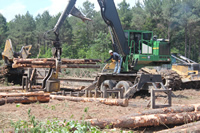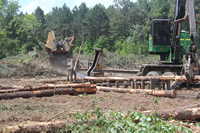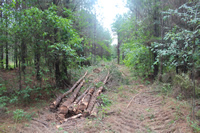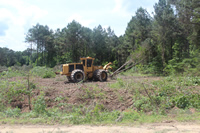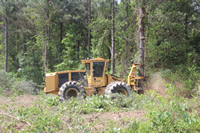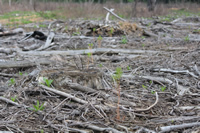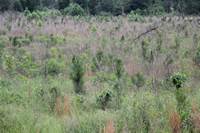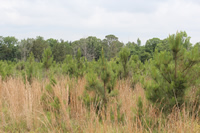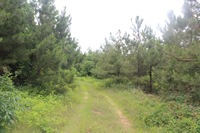Services
FOREST MANAGEMENT
Sound forest management is key to having a healthy stand of timber. However, without considering the landowner’s objectives, a proper management plan cannot be developed. If you are interested in forest management, we will meet with you to discuss your objectives and complete a timber inventory before we design a management plan. A timber inventory allows us to determine what types of timber you have, the overall forest health, the volume of the products, and the corresponding market values. Once we have this data and your objectives, we can customize a management plan to fit your short and long term goals.
TIMBER MARKETING
If the management plan includes harvesting timber, we begin the process of marketing the different forest products. Since Silvicraft, Inc. is not affiliated with any mills, we are able to “shop around” to find the highest value possible for your timber. This also gives us the ability to stop hauling to one mill and start hauling to another mill if we see a price increase for the same product, which we pass along to the landowner. Having this flexibility also allows us to combine several tracts, with different landowners, and negotiate with the mills for higher prices. Generally speaking, a mill may pay a premium for a larger volume, especially if it can be delivered during the wetter months of the year.
Timber marketing is not just limited to negotiating with the mills. Marketing also includes separating the higher value products in the woods and sending it to the correct mill. Some landowners are not aware that a single tree may contain different products with different values. For example, a 22” diameter pine tree may contain up to 4 different products, depending on its height, that can be shipped to four different mills. We feel that we are obligated to our customers to merchandise, or process, each tree to its highest potential value rather than doing what is easy and sending it to one mill.
TIMBER THINNING/HARVESTING
Once we have the management plan in place and the timber has been marketed to the different mills, we will employ one of our logging contractors to complete any thinning or harvesting that the plan calls for. Silvicraft, Inc. employs, on average, 20 logging contractors year round to do our thinning and harvesting work. They range in size from 20 loads per week to 120 loads per week. Each of them have completed the Arkansas Timber Producer’s Association (ATPA) Professional Logger training program. This program intensively covers job safety and adherence to Arkansas Best Management Practices (BMP’s). Once they have completed the program, they are required to complete continuing education courses each year and supply us with their certifications that we keep on file at all times. Our staff foresters are also required to complete this certification as well as the continuing education courses.
Depending on the type of thinning or harvesting operation the management plan calls for, we will choose one of our contractors, based on their ability, to complete the job. We have contractors that are specialized in first and second thinning of pine plantations, hardwood thinning, mixed species thinning, and final harvests. Typically our staff will determine, as a group, which contractor to use for each individual scenario. This ensures that the landowner receives the best possible thinning or harvesting operation. Once the logging operation begins, our foresters visit the job site regularly to make sure that the management plan is being followed, BMP’s are adhered to, merchandising specifications are followed, and follow up on any concerns that the landowner may have while the logging operation is in progress.
REFORESTATION
Another integral part of forest management is reforestation. If the plan calls for a reforestation of nonproductive land or land that has been harvested, we contract with site preparation and planting contractors to complete these tasks.
Site preparation may consist of mechanical preparation, herbicide treatments, prescribed fire, or a combination. Once the site has been evaluated, a cost effective plan for site preparation can be determined along with the proper type of trees to be planted following site preparation. When evaluating a site, our foresters will create a GPS map to determine acreage. Next, we contact our site preparation and planting contractors to determine a cost per acre. These costs are affected by the condition the site is in, the intensity of the preparation processes needed, and the type of trees to be planted.
Generally speaking, reforestation is an investment for the future. As with any investment, an outcome cannot be guaranteed but if the right steps are taken to establish a new forest, it is more likely that the landowner will see the desired results in the future.



